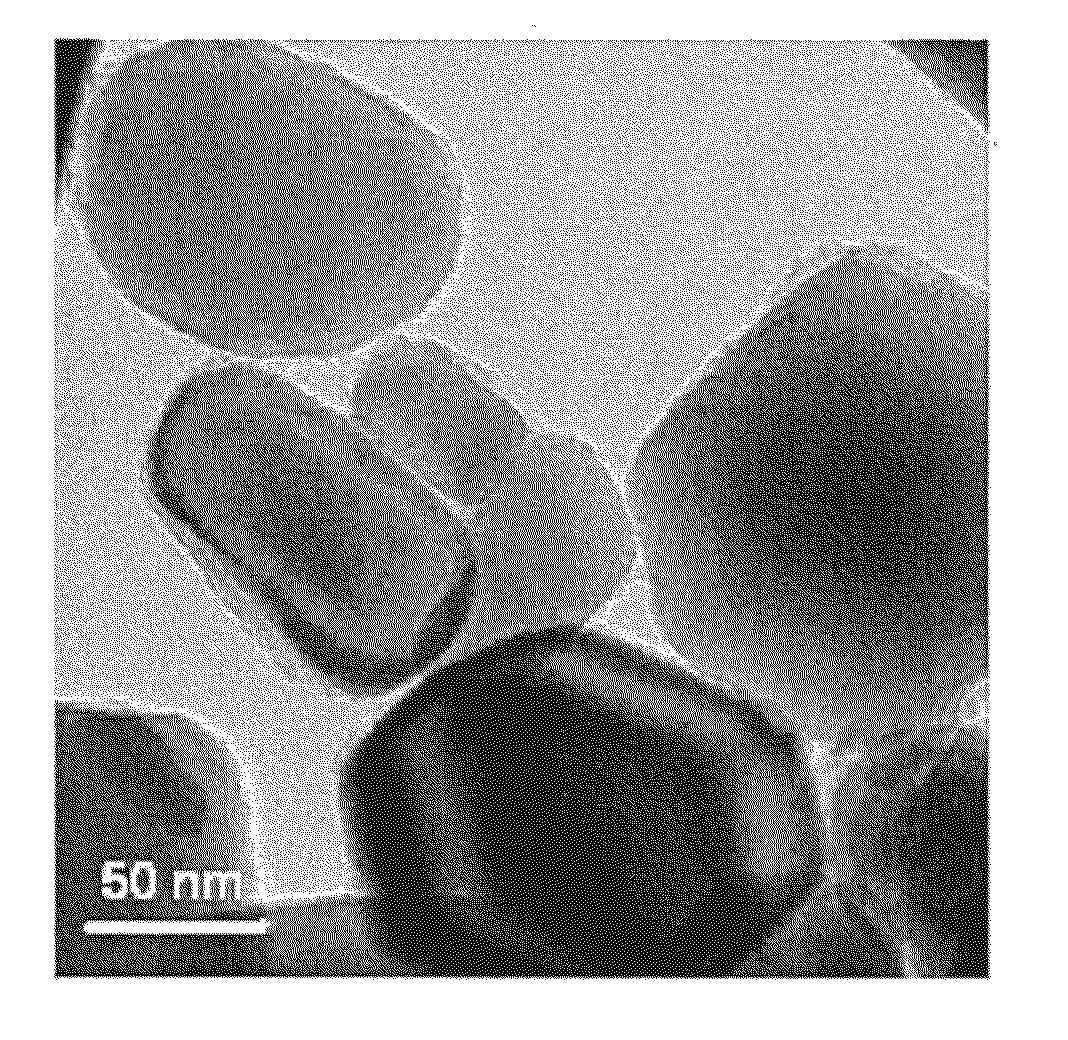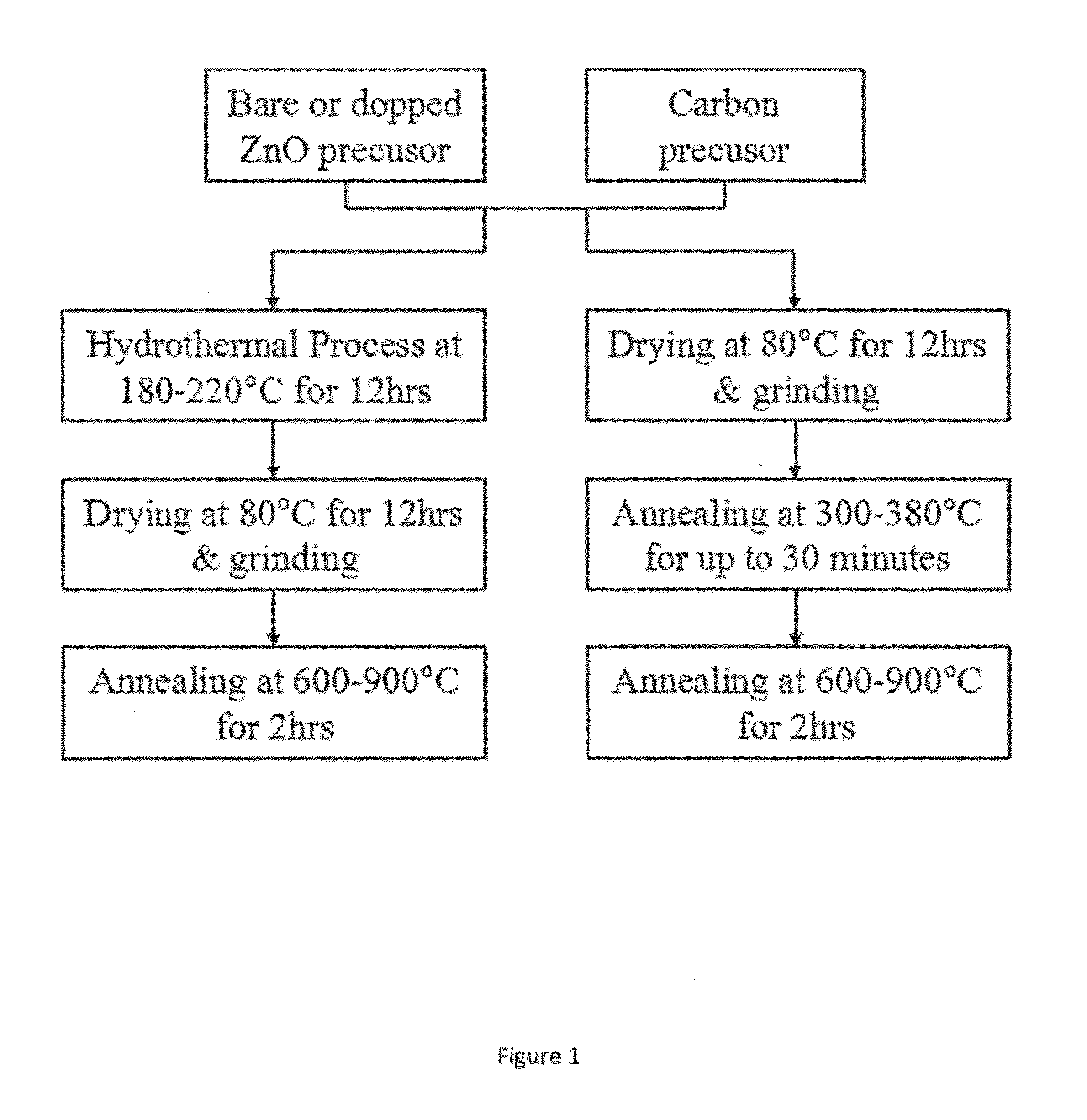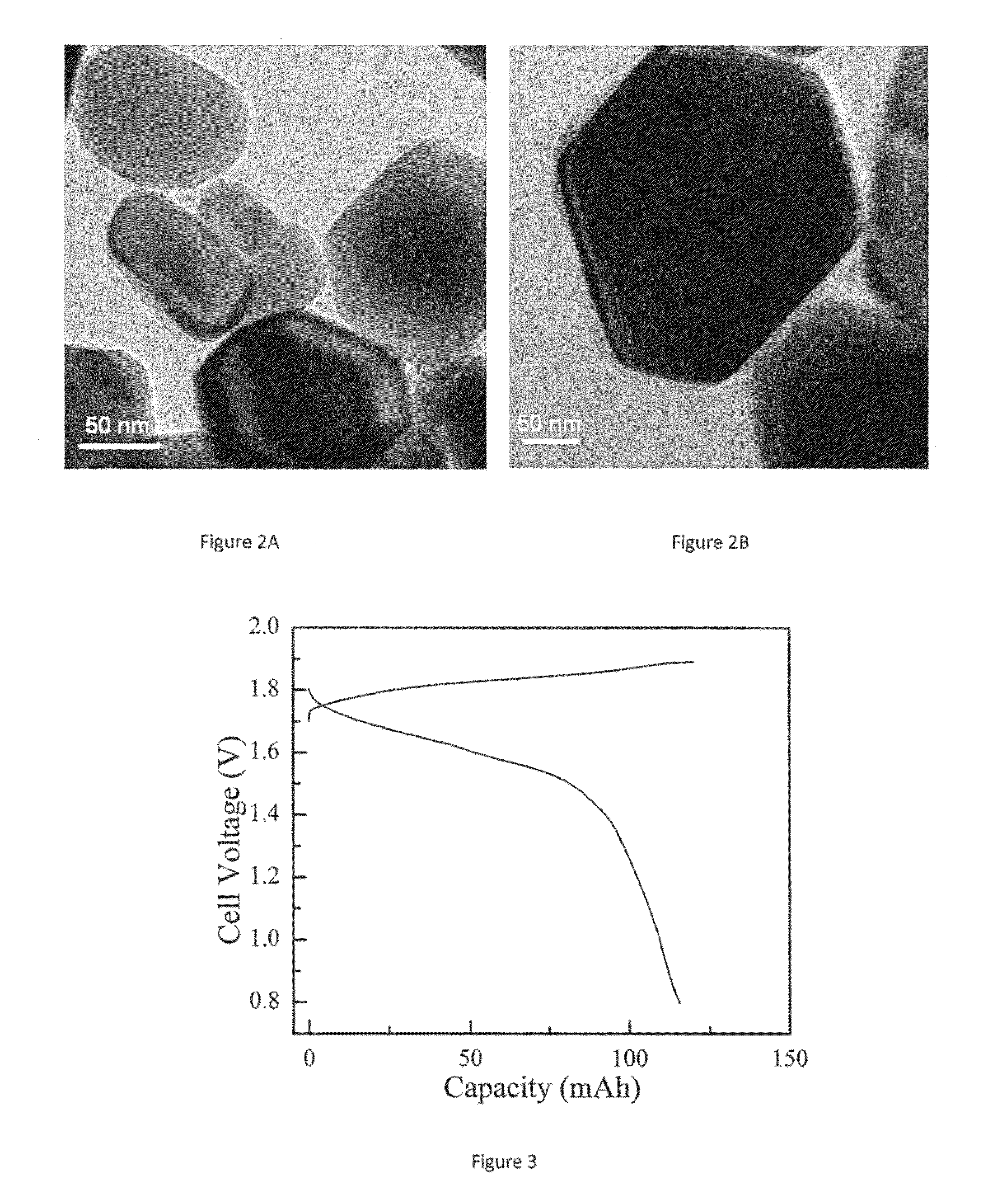Composite materials for rechargeable zinc electrodes
a technology of zinc electrodes and composite materials, applied in the direction of nickel accumulators, cell components, coatings, etc., can solve the problems of preventing the commercial application of secondary batteries of batteries, and achieve the effect of great improvement of performan
- Summary
- Abstract
- Description
- Claims
- Application Information
AI Technical Summary
Benefits of technology
Problems solved by technology
Method used
Image
Examples
example 1
ZnO / C with PVA as the Precursor
[0097]ZnO / C was synthesized by polymer pyrolysis. Typically 5 g polyvinyl alcohol (PVA) powder was dissolved in 60 g deionized water under heating. An amount of 25 g ZnO powder was slowly poured into the aqueous PVA solution to form a suspension. The suspension was stirred for two hours at 25° C., and then the temperature was kept above 90° C. until most of the water vaporized. The resulting viscous slurry was further dried for 12 hours in a Vulcan 3-550 oven, available from Ney, at 120° C. to produce a solid, which solid was calcined at from 600° C. to 900° C. in an inert atmosphere in an OTF-1200X tube furnace, available from MTI Corp., to produce active powder for a Zn electrode.
example 2
ZnO / Ca(OH)2 / C
[0098]ZnO, Ca(OH)2, and water, in a weight ratio of 80 parts:20 parts:100 parts, were mixed in a planetary ball miller for four hours to form a slurry. Ten parts by weight of PVA powder were dissolved in 100 parts by weight of deionized water under heating. The ZnO / Ca(OH)2 slurry was mixed with the aqueous PVA solution on a hot plate and stirred for two hours at room temperature. Then, the temperature was kept above 90° C. until most of the water vaporized to form viscous slurry. The resulting slurry was further dried in an oven for 12 hours to form a solid, which was calcined at from 600° C. to 900° C. in an inert atmosphere to produce the active powder for the electrode. The weight ratio of ZnO:Ca(OH)2PVA was controlled as x:1:y, where 1<x<20 and 0.05<y<2.
example 3
Carbon Coated ZnO, Ca(OH)2—ZnO, or Ca(OH)2—Bi2O3—ZnO Synthesized from Two-Step Hydrothermal and Subsequent Annealing or from Two-Step Annealing Processes
[0099]Consistent with FIG. 1, for the synthesis of carbon coated ZnO, a carbon precursor is selected from the group consisting of glucose, sucrose, hydrolyzed poly(vinyl alcohol), poly(acrylic acid), carboxymethyl cellulose, and other carbon-based polymers.
[0100]ZnO) based powders were either purchased commercially or synthesized in the lab. Bare ZnO powders (50-250 nm, available from Aldrich) and ZnO nanopowders (10-30 nm, available from US Research Nanmaterials, Inc) were purchased commercially.
[0101]Various stoichiometry of Ca(OH)2—ZnO and Ca(OH)2—Bi2O3—ZnO nanoparticles were synthesized by wet chemical method using calcium nitrate, zinc nitrate, bismuth nitrate, and sodium hydroxide precursors. In a typical synthesis of Ca(OH)2—ZnO, an appropriate amount of zinc nitrate (Zn(NO3)2.4H2O) and calcium nitrate (Ca(NO3)2.4H2O) were di...
PUM
| Property | Measurement | Unit |
|---|---|---|
| particle size | aaaaa | aaaaa |
| particle size | aaaaa | aaaaa |
| open cell voltage | aaaaa | aaaaa |
Abstract
Description
Claims
Application Information
 Login to View More
Login to View More - R&D
- Intellectual Property
- Life Sciences
- Materials
- Tech Scout
- Unparalleled Data Quality
- Higher Quality Content
- 60% Fewer Hallucinations
Browse by: Latest US Patents, China's latest patents, Technical Efficacy Thesaurus, Application Domain, Technology Topic, Popular Technical Reports.
© 2025 PatSnap. All rights reserved.Legal|Privacy policy|Modern Slavery Act Transparency Statement|Sitemap|About US| Contact US: help@patsnap.com



